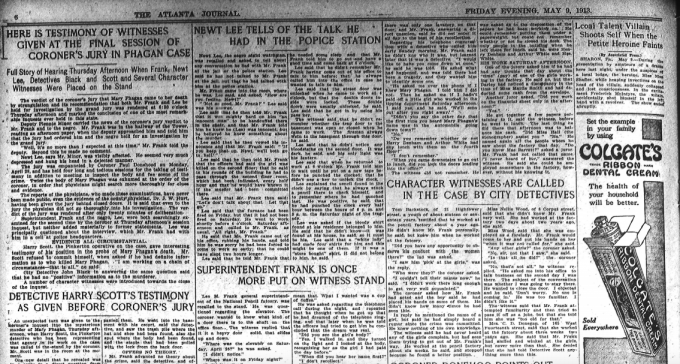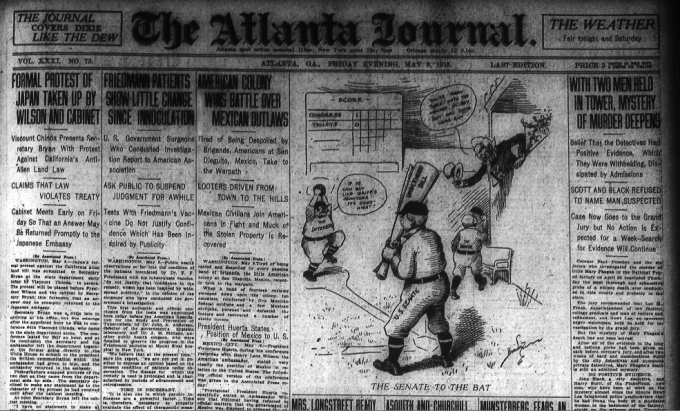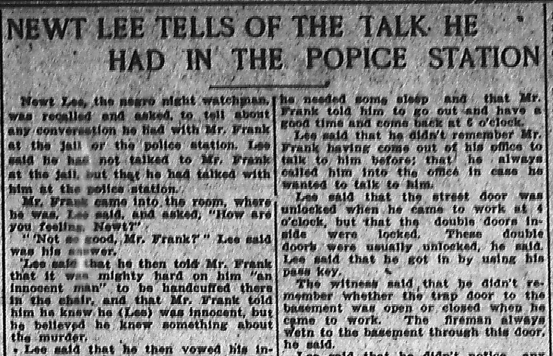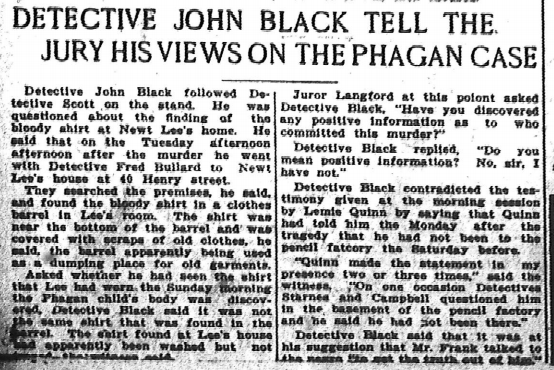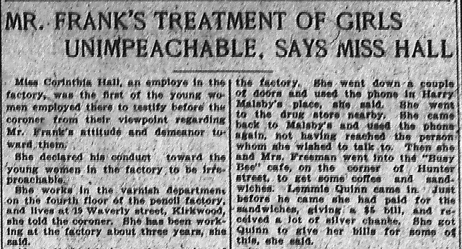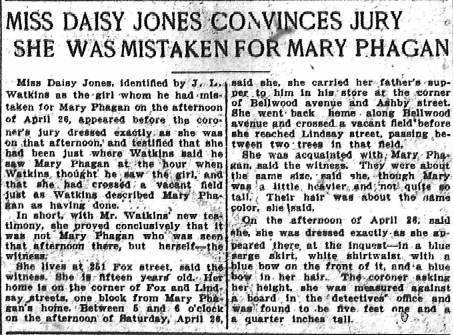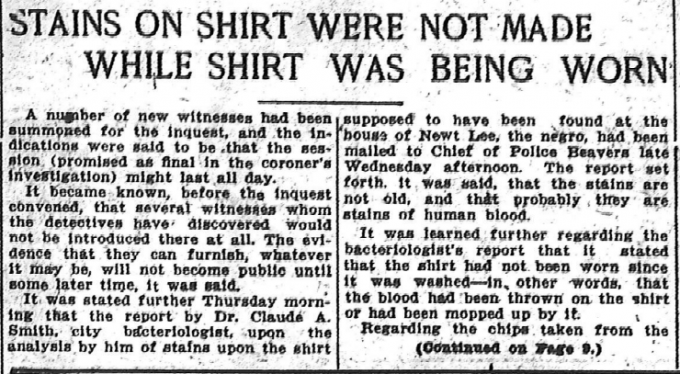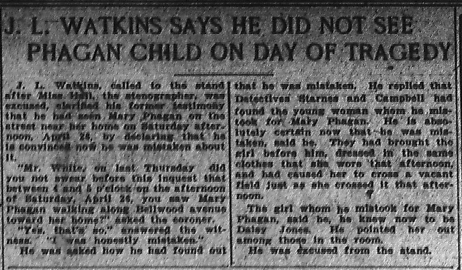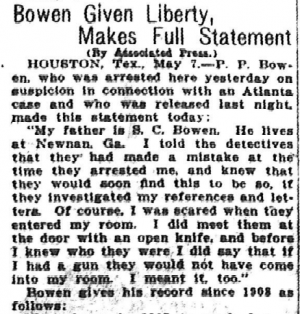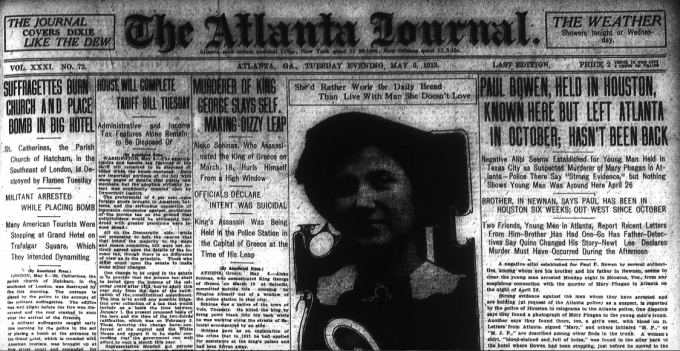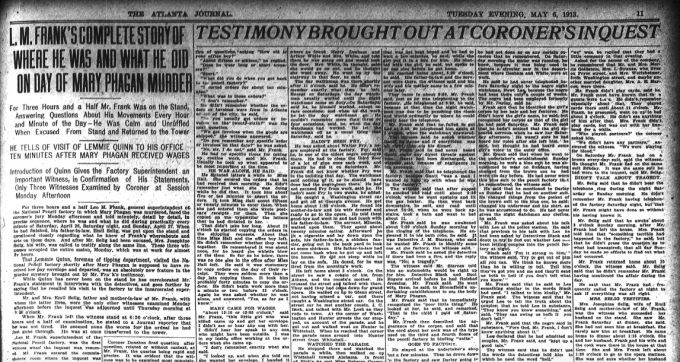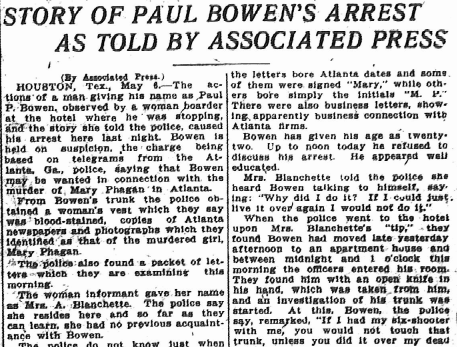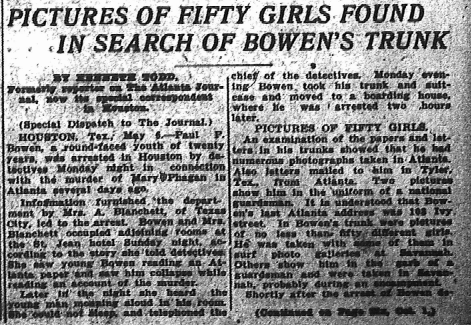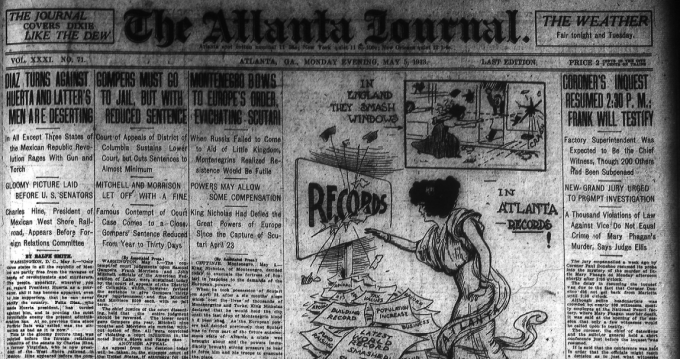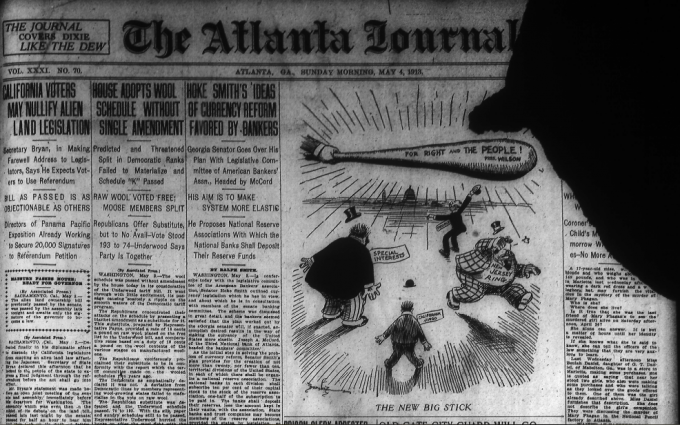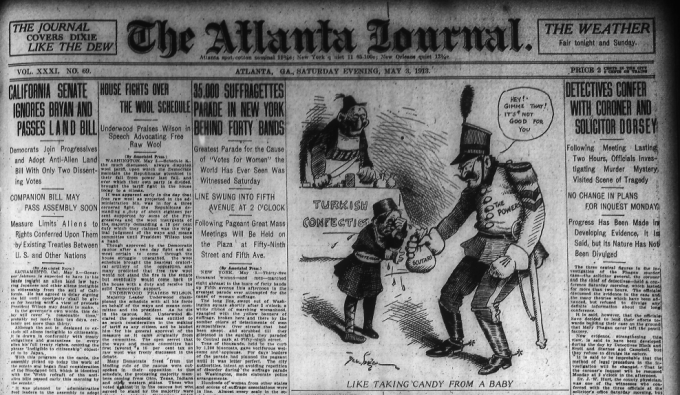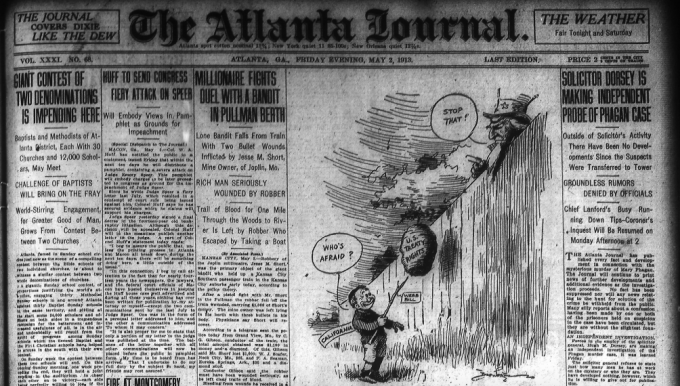Another in our series of new transcriptions of contemporary articles on the Leo Frank case.
Atlanta Journal
Friday, May 9th, 1913
Full Story of Hearing Thursday Afternoon When Frank, Newt Lee, Detectives Black and Scott and Several Character Witnesses Were Placed on the Stand
The verdict of the coroner’s jury that Mary Phagan came to her death by strangulation and its recommendation that both Mr. Frank and Lee be held for investigation by the grand jury was rendered at 6:30 o’clock Thursday afternoon and marked by the conclusion of one of the most remarkable inquests ever held in this state.
Deputy Plennis Minor carried the news of the coroner’s jury verdict to Mr. Frank and to the negro. Mr. Frank was in the hallway of the Tower, reading an afternoon paper, when the deputy approached him and told him that the jury had ordered him and the negro held for an investigation by the grand jury.
“Well, it’s no more than I expected at this time,” Mr. Frank told the deputy. Beyond this he made no comment.
Newt Lee, says Mr. Minor, was visibly affected. He seemed very much depressed and hung his head in a dejected manner.
The jury was empaneled by Coroner Paul Donehoo on Monday, April 28, and has held four long and tedious sessions for the taking of testimony in addition to meeting to inspect the body and the scene of the crime. Twice the body of Mary Phagan was exhumed at the order of the coroner, in order that physicians might search more thoroughly for clues and evidence. Continue Reading →

